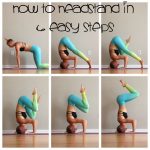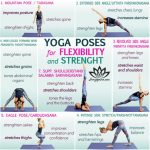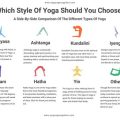Unlocking Peak Performance: Why More Athletes Are Embracing Power Yoga
Power yoga is no longer just a niche fitness trend or spiritual practice—it has taken the athletic world by storm. Athletes across sports, from football to tennis, are incorporating power yoga into their training regimens to improve flexibility, enhance recovery, and strengthen mental focus. But what’s driving this shift, and how does power yoga compare with traditional forms of physical conditioning? This article delves into the growing adoption of power yoga among athletes and explores its impact on athletic performance.
Introduction
Athletes need more than just strength and endurance to excel; they require balance, mental resilience, and effective recovery methods. Historically, weight training and cardio were the go-to options. However, a new trend has emerged: power yoga. With a reputation for being physically demanding yet mentally restorative, power yoga is increasingly becoming a staple in many athletes’ routines. This article explains the benefits, challenges, and strategic role of power yoga in athletic performance.
Key Concepts
- Power Yoga: A dynamic, fast-paced style of yoga that focuses on strength, flexibility, and stamina.
- Flexibility vs. Mobility: Flexibility refers to muscle elasticity, while mobility emphasizes joint range of motion under control.
- Active Recovery: The practice of engaging in low-intensity activities post-training to boost circulation and reduce soreness.
- Parasympathetic Activation: A physiological state where the nervous system shifts into rest and recovery mode, enhancing relaxation and recovery.
Historical Context
Yoga has existed for thousands of years, with its roots in ancient India, primarily focusing on spiritual growth and mental clarity. However, as yoga entered Western fitness culture in the 20th century, it evolved into various styles. The emergence of power yoga in the 1990s marked a pivotal shift. Unlike traditional yoga styles, which emphasized slow and deliberate movements, power yoga introduced fast-paced sequences, attracting those seeking physical challenge. Initially dismissed by athletes as too gentle, the physical rigor of power yoga began to change perceptions.
Current State Analysis
Today, power yoga is widely recognized as a complementary training tool. Professional sports teams and individual athletes, including NBA stars and Olympic competitors, actively promote its benefits. Sports psychologists and physiologists have identified several reasons for the shift:
- Improved Range of Motion: Increased flexibility reduces the risk of injury and enhances performance in sports requiring dynamic movements.
- Enhanced Mental Focus: Breath control techniques foster concentration, helping athletes stay in the zone during competitions.
- Active Recovery: Low-impact sequences help alleviate muscle fatigue and promote faster recovery between games or training sessions.
Practical Applications
Integrating power yoga into an athlete’s routine requires a tailored approach. Key considerations include:
- Incorporating yoga sessions on rest days for active recovery.
- Using sequences that target problem areas, such as tight hip flexors in runners.
- Applying breath control techniques during high-pressure moments, like free throws or penalty kicks.
Case Studies
| Athlete | Sport | Benefits Observed |
|---|---|---|
| LeBron James | Basketball | Enhanced recovery and increased endurance |
| Tom Brady | Football | Improved flexibility, injury prevention |
| Serena Williams | Tennis | Better focus under pressure |
| Eliud Kipchoge | Marathon Running | Injury reduction and joint health |
Stakeholder Analysis
The growing adoption of power yoga impacts several stakeholders in the sports ecosystem:
- Athletes: Better performance, fewer injuries, faster recovery.
- Coaches and Trainers: New techniques for optimizing athlete development.
- Sports Brands: Increased demand for yoga-related products and services.
Implementation Guidelines
- Start Slowly: Athletes unfamiliar with yoga should begin with foundational poses to prevent strain.
- Combine with Existing Routines: Yoga should complement, not replace, core strength and conditioning programs.
- Work with Certified Instructors: Proper guidance ensures maximum benefit and prevents injuries.
Ethical Considerations
Power yoga’s growing influence raises several ethical concerns:
- Commercialization: Are athletes driven by genuine benefits, or is it just another trend promoted by influencers?
- Cultural Appropriation: How can athletes and brands respectfully engage with yoga’s cultural origins?
Limitations and Future Research
While power yoga shows great promise, it’s not a universal solution for all athletes. Some challenges include:
- Risk of Overuse Injuries: Repetitive stress from certain poses can lead to injuries if not monitored.
- Adaptation Issues: Athletes accustomed to high-impact routines may struggle with the slower pace initially.
Future research should focus on:
- Longitudinal studies measuring power yoga’s impact on athletic performance.
- Developing sport-specific yoga routines for targeted benefits.
- Exploring the psychological effects of yoga on competitive performance.
Expert Commentary
Dr. Alice Martin, Sports Physiologist: “Power yoga offers a unique blend of strength and flexibility training that traditional gym workouts often overlook. It’s especially beneficial in preventing overuse injuries.”
Coach Steve Williams, NBA Trainer: “We’ve integrated yoga sessions into our athletes’ routines, and the results speak for themselves. It’s more than just flexibility; it’s mental conditioning too.”
Jane Peterson, Sports Psychologist: “What makes power yoga so powerful is its capacity to enhance mindfulness—keeping athletes focused even under intense pressure.”
Sara Lee, Olympic Gold Medalist: “I never thought yoga could improve my sprint times, but the improved mobility made a huge difference in my stride.”
Conclusion: The integration of power yoga into athletic training marks a shift toward holistic fitness. As athletes strive for excellence, power yoga provides a new way to build both physical and mental resilience. With increasing evidence supporting its benefits, power yoga is poised to become a cornerstone of athletic preparation.








